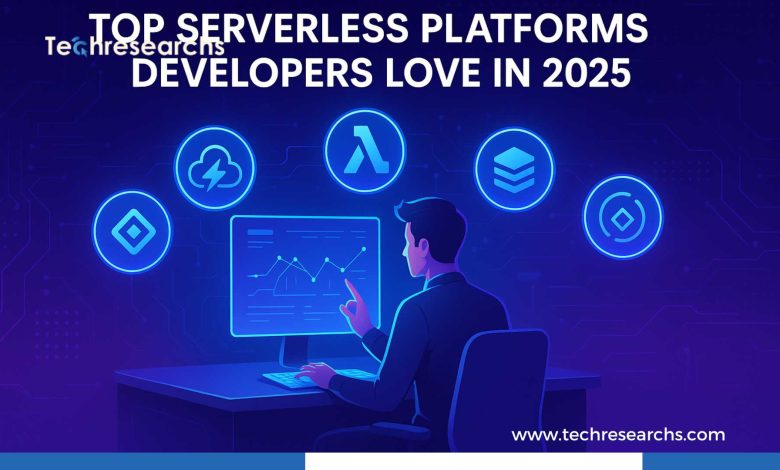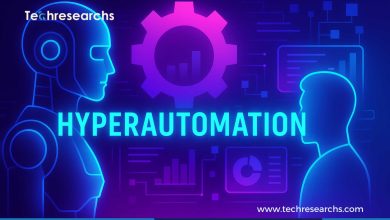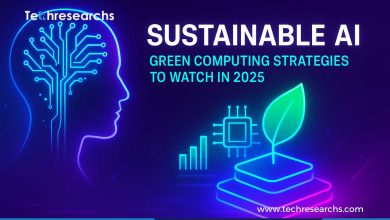Top Serverless Platforms Developers Love in 2025

Serverless is no longer just a buzzword—it’s the backbone of modern application development. In 2025, platforms developers rely on are defined by speed, scalability, and simplicity. From lean startups to enterprise-grade tech teams, developers are shifting to platforms that allow them to focus on code—not infrastructure.
If you’re building cloud-native applications, here’s a breakdown of the top serverless platforms developers love in 2025, each offering unique advantages depending on your tech stack and use case.
Why Serverless Is the Future Platforms Developers Are Already Using
Serverless computing lets you deploy functions that automatically scale without managing servers. You only pay for what you use—no idle time, no maintenance. That’s why over 68% of global dev teams report adopting at least one serverless solution in their 2025 tech stack (DevPulse Research).
Key benefits driving adoption:
- Reduced DevOps overhead
- Faster time-to-market
- Event-driven architecture
- Built-in fault tolerance
- Seamless CI/CD integration
Top Serverless Platforms Developers Love in 2025
Here’s what’s dominating dev workflows this year.
1. AWS Lambda
A leader since the early days, AWS Lambda continues to dominate serverless workflows.
Why developers love it:
- Supports multiple languages including Python, Java, Go, and Node.js
- Auto-scales based on concurrent requests
- Natively integrates with 200+ AWS services
Best for:
Teams already in the AWS ecosystem looking for flexibility and scale.
2. Google Cloud Functions
Perfect for apps that are deeply integrated into the Google Cloud and Firebase ecosystem.
Top features:
- Event-driven from Firebase, Pub/Sub, and HTTP triggers
- Quick deployment with Cloud CLI or UI
- Built-in security and role management via IAM
Best for:
Mobile apps, real-time notifications, and backend logic triggered by user behavior.
3. Azure Functions
Microsoft Azure Functions remains the go-to for enterprise-level developers, especially in regulated industries.
What makes it stand out:
- Durable Functions enable orchestrated workflows
- Deep integration with Visual Studio and GitHub Actions
- Multiple trigger options including HTTP, queue, timer
Best for:
Enterprises already leveraging Microsoft services like Azure DevOps and Active Directory.
4. Vercel Functions
Built with frontend developers in mind, Vercel Functions simplifies the full-stack workflow.
Key highlights:
- Supports TypeScript and JavaScript
- Auto-deployment with Git
- Optimized for Next.js applications
Best for:
Front-end heavy teams building high-performance web apps.
5. Netlify Functions
For JAMstack fans, Netlify Functions offer an easy way to add backend logic.
What developers like:
- Works directly from your Git workflow
- Fast global CDN-based deployment
- Easy rollback and previews
Best for:
Static websites, headless CMS projects, and serverless eCommerce.
6. Firebase Cloud Functions
Tailored for mobile-first applications, Firebase Cloud Functions handles real-time and background logic.
Strengths:
- Seamless integration with Firebase services (Auth, Firestore, Analytics)
- Real-time triggers
- Fully managed with zero setup overhead
Best for:
iOS and Android developers looking to sync backend logic effortlessly.
7. Cloudflare Workers
Cloudflare Workers are edge-deployed serverless functions, reducing latency to microseconds.
Why it’s hot in 2025:
- Runs on Cloudflare’s global edge network
- Low cold-start time
- Supports WASM for advanced performance
Best for:
API endpoints, A/B testing, edge caching, and personalized content delivery.
Table: Serverless Platform Comparison (2025)
| Platform | Best For | Key Languages | Unique Feature |
|---|---|---|---|
| AWS Lambda | Enterprise & cloud-first apps | Python, Node.js, Java | Deep AWS service integration |
| Google Cloud Functions | Firebase and automation | JavaScript, Go | Native Firebase triggers |
| Azure Functions | Enterprise and hybrid systems | C#, Python, JavaScript | Durable Functions & CI/CD support |
| Vercel Functions | Frontend-focused projects | TypeScript, JavaScript | Next.js and frontend optimization |
| Netlify Functions | JAMstack & headless CMS apps | JavaScript, Go | Git-based deployment & rollbacks |
| Firebase Functions | Mobile-first apps | JavaScript, TypeScript | Firestore & Auth native support |
| Cloudflare Workers | Global edge & low-latency apps | JavaScript, WASM | Runs at edge with global reach |
What Platforms Developers Should Bet On in 2025
In 2025, top serverless platforms developers love aren’t just about speed—they’re about building better. Whether you’re working with AWS Lambda’s scalability, Cloudflare’s edge power, or Firebase’s mobile-first ease, you’ve got game-changing tools at your fingertips.
What’s next? Expect tighter DevOps integrations, more granular analytics, and expanded AI/ML support across all major platforms. If you’re not serverless yet, you’re shipping slower than your competition.
FAQ About Platforms Developers
1. Are serverless platforms only for startups?
A. Not at all. Enterprises rely on serverless to simplify architecture, reduce costs, and scale operations efficiently.
2. How do serverless platforms charge developers?
A. Most use a pay-per-execution model, meaning you only pay for the compute time your function uses.
3. Can I use serverless functions for full applications?
A. Yes. Many modern apps combine serverless functions with APIs, databases, and static frontends to run production-grade systems.
4. Is there vendor lock-in with serverless platforms?
A. Yes, to an extent. Each platform has its own APIs and integrations. However, adopting open standards and abstraction layers can help mitigate this.



